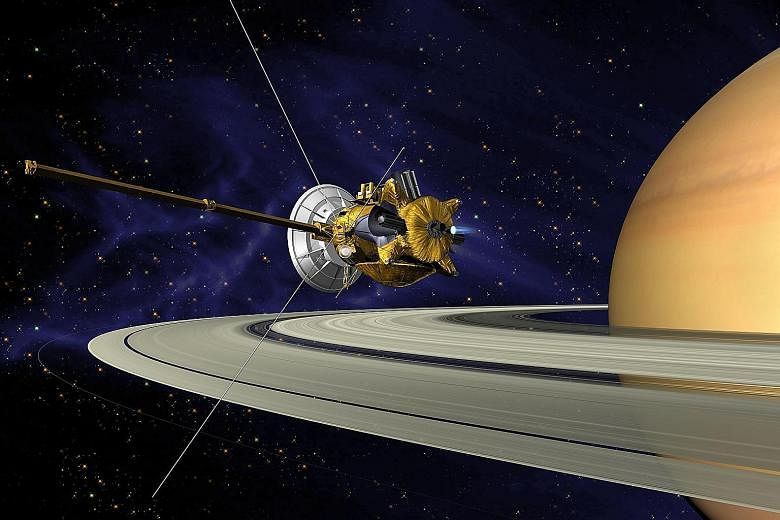TAMPA (Florida) • Astronomers worldwide bid farewell yesterday to Nasa's famed Cassini spacecraft, which was launched 20 years ago to circle Saturn and has transformed the way we think about life elsewhere in the solar system.
Cassini, an international project that cost US$3.9 billion (S$5.3 billion) and included scientists from 27 nations, yesterday ran out of rocket fuel as expected after a journey of some 7.9 billion kilometres.
The spacecraft completed its death plunge into the ringed gas giant - the farthest planet visible to the naked eye - shortly after its final contact with Earth at 7.55pm Singapore time.
Cassini's well-planned demise was meant to prevent any damage to Saturn's ocean-bearing moons Titan and Enceladus, which scientists want to keep pristine for future exploration because they may contain some form of life.
"The signal from the spacecraft is gone," said Cassini's mission manager Earl Maize, as the unmanned orbiter ran out of fuel and disintegrated in Saturn's atmosphere.
Three other spacecraft have flown by Saturn - Pioneer 11 in 1979, followed by Voyager 1 and 2 in the 1980s. But they have not studied Saturn in such detail as Cassini, which was named after the 17-century French-Italian astronomer Giovanni Domenico Cassini, who discovered that Saturn had several moons and a gap in between its rings.
Cassini was launched from Cape Canaveral, Florida in 1997, then spent seven years in transit followed by 13 years orbiting Saturn. In that time, it discovered six more moons around Saturn, three-dimensional structures towering above Saturn's rings, and a giant storm that raged across the planet for nearly a year.
The 6.7m by 4m spacecraft is also credited with discovering icy geysers erupting from Saturn's moon Enceladus, and eerie hydrocarbon lakes made of ethane and methane on Saturn's largest moon, Titan.
In 2005, the Cassini orbiter released a lander called Huygens on Titan, marking the first and only such landing in the outer solar system, on a celestial body beyond the asteroid belt.
"The mission has changed the way we think of where life may have developed beyond Earth," said Dr Andrew Coates, head of the Planetary Science Group at Mullard Space Science Laboratory at University College London.
"As well as Mars, outer planet moons like Enceladus, Europa and even Titan are now top contenders for life elsewhere," he added.
AGENCE FRANCE-PRESSE

